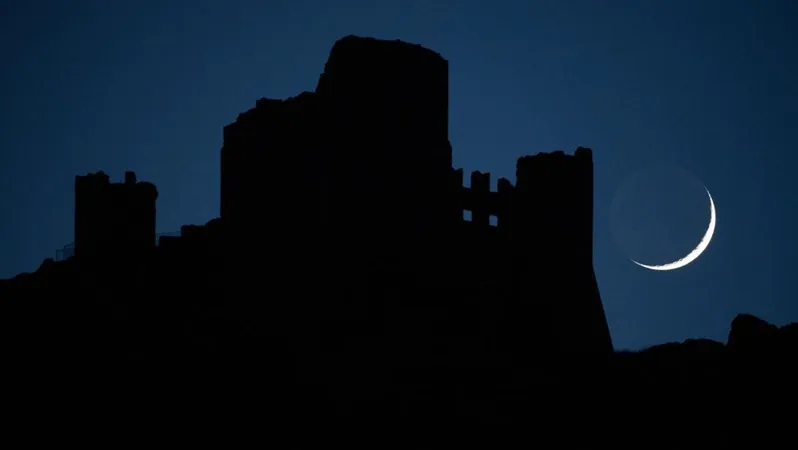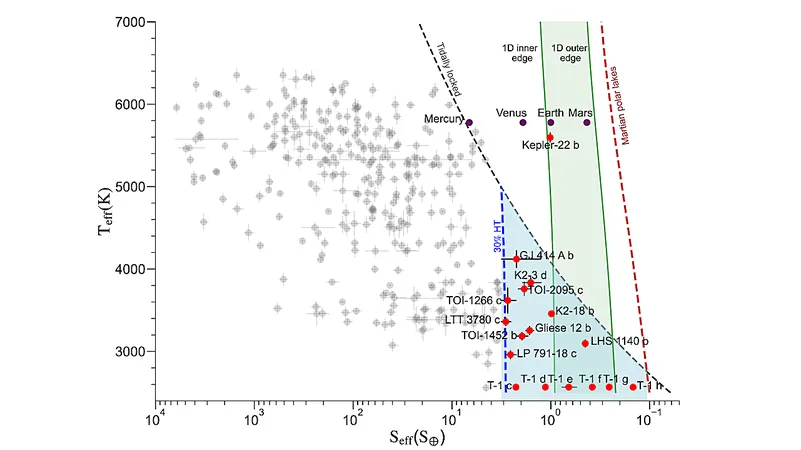
Dive into the Cosmos This Halloween: Witness a Comet, Aurora, and Celestial Wonders!
2024-10-28
Author: Yu
Dive into the Cosmos This Halloween: Witness a Comet, Aurora, and Celestial Wonders!
As we approach the spookiest night of the year, stargazers in North America are in for an astronomical treat! From October 28 to November 3, 2024, the night sky will present several extraordinary events that you won't want to miss.
Comet Tsuchinshan-ATLAS and Spectacular Auroras Await!
This week kicks off with an exciting new moon, providing ideal dark skies for spotting Comet Tsuchinshan-ATLAS. Grab your binoculars and prepare for an adventure; the comet should be visible in the evening, especially given the solar activity peaking this week. Expect the possibility of strong geomagnetic storms, which could lead to stunning displays of the aurora borealis in northern regions. If conditions are right, the skies will light up with shimmering greens and purples—a sight that will leave you breathless!
Solar Phenomena: Sunspots Galore
Monday, October 28 marks a fantastic opportunity to observe sunspots. If you have eclipse glasses from April’s total solar eclipse, now is the time to pull them out! The sun is currently experiencing a 23-year high in sunspot activity, boasting several active regions. Keep your eyes glued to the sun, but never look at it directly without proper protection! These sunspots have been resulting in multiple solar flares directed toward Earth.
Halloween: More Than Just Treats!
Did you know that October 31 is not just Halloween, but also marks a significant point in our solar calendar? It's considered a cross-quarter day, falling halfway between the September equinox and December solstice. While the goblins and ghosts roam, take a moment to appreciate the celestial significance of the day as well!
New Moon Mania!
On November 1, the new moon will grace the skies, signifying a stellar time for astronomy enthusiasts. With the moon positioned between the Earth and the sun, it will be invisible to the naked eye, allowing for optimal stargazing conditions. This week is perfect for spotting other celestial objects without the interference of moonlight, so don’t miss out!
Celestial Showdown: Crescent Moon and Antares
As we move to November 3, prepare your eyes for a splendid view. After Daylight Saving Time ends, look to the western sky after sunset. A slender crescent moon will emerge, appearing alongside Antares, the red supergiant star in the constellation of Scorpius. Antares is touted as one of the largest known stars and is approximately 12 times the mass of our sun. Above them, the bright planet Venus will be easily traceable, and if you're keen, spot Mercury just above the horizon with a set of binoculars.
Panorama of the Week: A Glimpse of Jupiter and Winter Stars
Don't forget to look to the east around 10:00 p.m. for a stunning view of Jupiter, which will rise among a host of winter constellations. You can locate it near Capella, known as the 'goat star,' and the Aldebaran, the bright eye of the Bull in Taurus. Keep your eyes peeled for the stunning open cluster of stars known as the Pleiades and the iconic constellation Orion, featuring its prominent stars like Betelgeuse.
Final Tips:
For those in different latitudes, remember to consult an online planetarium like Stellarium for precise viewing instructions tailored to your location. Prepare for an unforgettable week of celestial sights!



 Brasil (PT)
Brasil (PT)
 Canada (EN)
Canada (EN)
 Chile (ES)
Chile (ES)
 Česko (CS)
Česko (CS)
 대한민국 (KO)
대한민국 (KO)
 España (ES)
España (ES)
 France (FR)
France (FR)
 Hong Kong (EN)
Hong Kong (EN)
 Italia (IT)
Italia (IT)
 日本 (JA)
日本 (JA)
 Magyarország (HU)
Magyarország (HU)
 Norge (NO)
Norge (NO)
 Polska (PL)
Polska (PL)
 Schweiz (DE)
Schweiz (DE)
 Singapore (EN)
Singapore (EN)
 Sverige (SV)
Sverige (SV)
 Suomi (FI)
Suomi (FI)
 Türkiye (TR)
Türkiye (TR)
 الإمارات العربية المتحدة (AR)
الإمارات العربية المتحدة (AR)